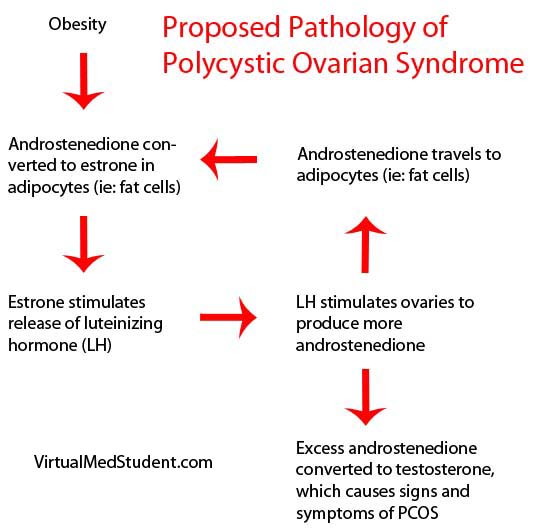Pelvic inflammatory disease (PID) refers to infection of the uterus, fallopian tubes, and/or ovaries. The most common infections that cause pelvic inflammatory disease are neisseria gonorrhoeae and chlamydia trachomatis. In fact, both bacteria may be present in the same patient! However, it is not uncommon for other pathogenic bacteria to be present as well. The exact role of most of these other pathogenic bacteria is not well understood.
In order for these organisms to gain access to the uterus, fallopian tubes, and ovaries there must be some breakdown of the normal barriers that separate the vagina from the upper genital tract. Interestingly, a significant number of cases of pelvic inflammatory disease occur just after menstruation when the possibility of pathogenic bacteria gaining access to the upper genital structures is at its greatest. In addition, normal vaginal bacteria can act as a barrier to invading pathogenic strains. Therefore, in some patients with PID the normal vaginal bacterial landscape has been altered in some way, which allows the overgrowth of pathogenic bacteria.
Patients who are at risk for pelvic inflammatory disease are generally those women who are at increased risk of sexually transmitted diseases. Therefore, women with multiple sexual partners, younger age (most cases occur between 15 and 25 years of age), previous history of sexually transmitted disease, and those that do not use barrier contraception (ie: condoms) are all at increased risk.
Signs and Symptoms

On pelvic examination patients are extremely tender to palpation of the uterus and ovaries. This is often referred to as the “Chandelier sign” because women will “reach for the chandeliers” because of the discomfort during the exam.
Complications
Complications can be severe if left untreated. Pelvic inflammatory disease can lead to scarring of the fallopian tubes and possible infertility. The risk of ectopic pregnancies is increased in women with a history of PID. Abscesses can form in the ovaries and tubes, as well as in the peritoneal cavity (ie: abdominal cavity). In addition, inflammation of the liver’s capsule can occur in a complication known as Fitz-Hugh-Curtis syndrome. Pelvic inflammatory disease can also lead to infection of the peritoneal cavity (aka: peritonitis).
Diagnosis
Diagnosis of pelvic inflammatory disease is based on clinical signs and symptoms. If lower abdominal discomfort with pain during pelvic examination (ie: cervical motion, uterine, and/or ovarian tenderness) is present, patients should be treated as though they have pelvic inflammatory disease.
There are numerous other criteria that can “support” the diagnosis, but are not necessary to have. They include other signs of infection like abnormal vaginal discharge, fever, elevated white blood cell count, and evidence of gonorrhea or chlamydial infection from laboratory tests.
Definitive diagnosis is made either by biopsy of the upper genital tract, imaging (ie: CT or MRI) that shows edematous fallopian tubes, or disease seen laparoscopically.
Treatment
Treatment of pelvic inflammatory disease is based on the severity of the clinical signs and symptoms, as well as the likely underlying organisms. Patients who are stable can be given oral antibiotics.
Generally a single dose of a third generation cephalosporin like ceftriaxone is given to cover gonorrhea; another antibiotic called doxycycline is given to cover the possibility of co-existent chlamydial infection. Metronidazole may be added to these medications if anaerobic bacteria are suspected.
If the patient appears very sick, is pregnant, unlikely to continue treatment as an outpatient (ie: homeless, destitute, etc), or unable to take oral antibiotics they should be hospitalized and treated with intravenous (IV) antibiotics. Usually a second generation cephalosporin like cefoxitin plus doxycycline (either IV or oral) is given. Clindamycin and gentamicin, as well as ampicillin-sulbactam (Unasyn®) can also be used in certain circumstances. In general, there are numerous antibiotic regimens that can be considered.
Overview
Pelvic inflammatory disease is an infection of the upper genital tract in females. This includes the uterus, fallopian tubes, and/or ovaries. Gonorrhea and chlamydia are the two most commonly isolated bacteria, but many infections are caused by other pathogenic bacteria. Diagnosis is made on clinical signs and symptoms. Treatment is with at least two antibiotics: one to cover gonorrhea and one to cover chlamydia.
Related Articles
References and Resources
- Eschenbach DA. Acute pelvic inflammatory disease: etiology, risk factors and pathogenesis. Clin Obstet Gynecol 1976 Mar;19(1):147-69.
- McCormack MW. Pelvic Inflammatory Disease. N Engl J Med 1994; 330:115-119
- enters for Disease Control and Prevention. Sexually transmitted diseases treatment guidelines, 2006. MMWR Recomm Rep 2006; 55(RR-11):1.
- Beckmann CRB, Ling FW, Smith RP, et al. Obstetrics and Gynecology
. Fifth Edition. Philadelphia: Lippincott Williams and Wilkins, 2006.
